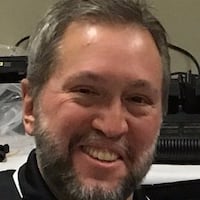The director of the Atlanta-based Centers for Disease Control and Prevention on Wednesday urged people to double-mask to help prevent the spread of the coronavirus.
Dr. Rochelle Walensky, who was recently appointed by President Joe Biden to take over the agency, also recommended wearing masks with a moldable nose wire; knotting the ear loops on the mask; and including a cloth mask over the disposable mask.
The CDC reported the results of a lab experiment that spaced two artificial heads 6 feet from each other and checked to see how many coronavirus-sized particles spewed by one were inhaled by the other.
The researchers found that wearing one mask — surgical or cloth — blocked about 40% of the particles coming toward the head that was breathing in. When a cloth mask was worn on top of a surgical mask, about 80% were blocked.
When the exhaling and inhaling heads were double-masked, more than 95% of the particles were blocked, said the CDC’s Dr. John Brooks.
“The first challenge is to get as many people as possible masking. And then for those that do mask, to help them get the best benefit out of that mask,” Brooks said.
The researchers used one brand of surgical mask and one kind of cloth mask, and it’s not clear if results would be the same with every product. But it echoes some earlier research that suggests two masks are better than one.
“It works,” Brooks said.
The CDC also was updating its guidance to address wearing two masks. If done correctly, a cloth mask worn over a surgical mask can tighten the gaps around the mask’s edges that can let virus particles in, the CDC said.
The agency also said it was taking down a do-it-yourself page, which went up last year when masks were in short supply and the CDC was encouraging people to take steps to interrupt viral transmission.
Some Americans have already started doubling up. Experts believe that’s at least partly out of concern about new strains of the coronavirus that have been found to spread more easily than the one that has driven the U.S. epidemic for the last year.
Mask-wearing has long been common in some countries during respiratory outbreaks, especially in parts of Asia, but not in the United States.
When the COVID-19 crisis began and masks disappeared from store shelves, U.S. health officials actively discouraged the general public from wearing them. “Seriously people - STOP BUYING MASKS!” then-Surgeon General Jerome Adams wrote in a tweet almost a year ago.
Two months later, after it became clear that infected people who did not exhibit symptoms could spread the virus, the CDC began recommending people wear masks in public.
Mask-wearing increased and some places enforced mask mandates, but many Americans continue not to wear them. A recent University of California survey suggested that only about half of U.S. adults wear masks when in close contact with people outside their household.
Discussions about double-masking and higher-quality masks are important, said Dr. Isaac Bogoch, an infectious diseases scientist at the University of Toronto.
“But if a significant proportion of your populations isn’t wearing a mask in the first place, then you’re having the wrong conversation,” he added.
Earlier this month, the CDC issued a mask-wearing rule requiring travelers on airplanes and public transportation including buses and subways to wear face masks. The rule “will protect Americans and provide confidence that we can once again travel safely even during this pandemic,” said Dr. Marty Cetron, director of CDC’s division of migration and quarantine, who signed the order.
The 11-page CDC order takes effect just before midnight Monday night. It makes refusal to wear a mask a violation of federal law, enforced by the Transportation Security Administration and other federal, state and local authorities.
The rule applies to passengers on airplanes, trains, subways, buses, taxis and ride-shares. It says travelers must wear a mask that covers their nose and mouth while riding and while getting on and off rides. The order extends to waiting areas such as airports, train platforms and subway stations.
About the Author
The Latest
Featured


